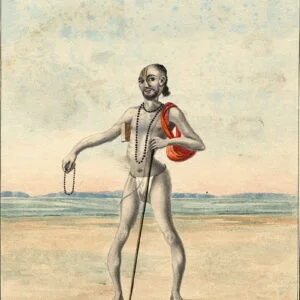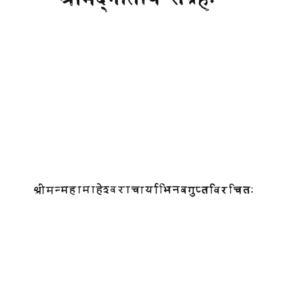Author: Unknown
About Sage Dattatreya:
Sage Dattatreya is a highly revered figure in Hinduism, often considered an incarnation of the Divine Trinity (Trimurti) of Brahma, Vishnu, and Shiva. His teachings and life are celebrated for their profound spiritual wisdom, and he is regarded as the epitome of renunciation and enlightenment. Dattatreya’s influence spans across various spiritual traditions within Hinduism, including Shaivism, Vaishnavism, and Shaktism, and he is also revered in Jainism and certain sects of Buddhism.
Birth and Early Life
Divine Origin:
- According to Hindu mythology, Dattatreya was born to the sage Atri and his wife Anasuya, who were known for their piety and devotion. The legend goes that the Trimurti (Brahma, Vishnu, and Shiva) decided to test the chastity and devotion of Anasuya. Impressed by her unwavering virtue, they granted her a boon, and she asked for the three gods to be born as her child. Thus, Dattatreya embodies the combined qualities and powers of the Trimurti.
Teachings and Philosophy
Advaita Vedanta (Non-Dualism):
- Dattatreya is most closely associated with the teachings of Advaita Vedanta, which emphasize the non-dual nature of reality. He taught that the ultimate reality, Brahman, is identical to the self (Atman) and that the perception of duality is an illusion (Maya). (Plese note that Advaita is the most widely accepted interpretation of Dattatreya. However, other scholars have different views.)
Renunciation and Detachment:
- Dattatreya’s life exemplifies the principles of renunciation and detachment. He is often depicted as an Avadhuta, a liberated being who has renounced all worldly attachments and societal norms. His teachings encourage living in harmony with nature, embracing simplicity, and realizing the self beyond the ego and material concerns.
Universal Guru:
- Dattatreya is considered the Guru of all Gurus, a universal teacher whose wisdom transcends religious boundaries. His followers believe that he embodies the highest spiritual knowledge and the essence of all teachings.
Spiritual Texts:
- Several important spiritual texts are attributed to or associated with Dattatreya, including the “Avadhuta Gita” and the “Tripura Rahasya.” These texts expound on the principles of Advaita Vedanta and provide guidance on the path to self-realization.
Iconography and Symbols
Depictions:
- Dattatreya is often depicted as a young ascetic with three heads and six arms, symbolizing his connection to the Trimurti. He is usually shown with a cow (symbolizing the earth and dharma) and four dogs (representing the four Vedas).
Attributes:
- His iconography includes attributes associated with Brahma (such as a water pot), Vishnu (such as a conch and discus), and Shiva (such as a trident), reflecting his role as an incarnation of the three deities.
Influence and Legacy
Spiritual Movements:
- Dattatreya’s teachings have influenced various spiritual movements and traditions within Hinduism. He is revered by the Nath tradition, the Aghori sect, and several other ascetic communities. His emphasis on inner realization and detachment has inspired countless seekers on the path of spirituality.
Pilgrimage Sites:
- There are numerous temples and pilgrimage sites dedicated to Dattatreya across India, particularly in Maharashtra, Gujarat, Karnataka, and Andhra Pradesh. These sites attract devotees who seek his blessings and spiritual guidance.
Cultural Impact:
- Dattatreya’s life and teachings have been celebrated in various literary and artistic works. His stories are told in scriptures, folklore, and devotional songs, reflecting his enduring presence in the spiritual and cultural landscape of India.
Conclusion
Sage Dattatreya stands as a beacon of spiritual wisdom and renunciation in Hindu tradition. His teachings on non-dualism, detachment, and self-realization continue to inspire and guide spiritual seekers. As an embodiment of the Trimurti, Dattatreya’s life and philosophy transcend religious boundaries, offering a universal message of inner peace, harmony with nature, and the realization of the ultimate truth. His legacy endures through the devotion of his followers, the sacred texts attributed to him, and the countless stories that celebrate his divine wisdom.






